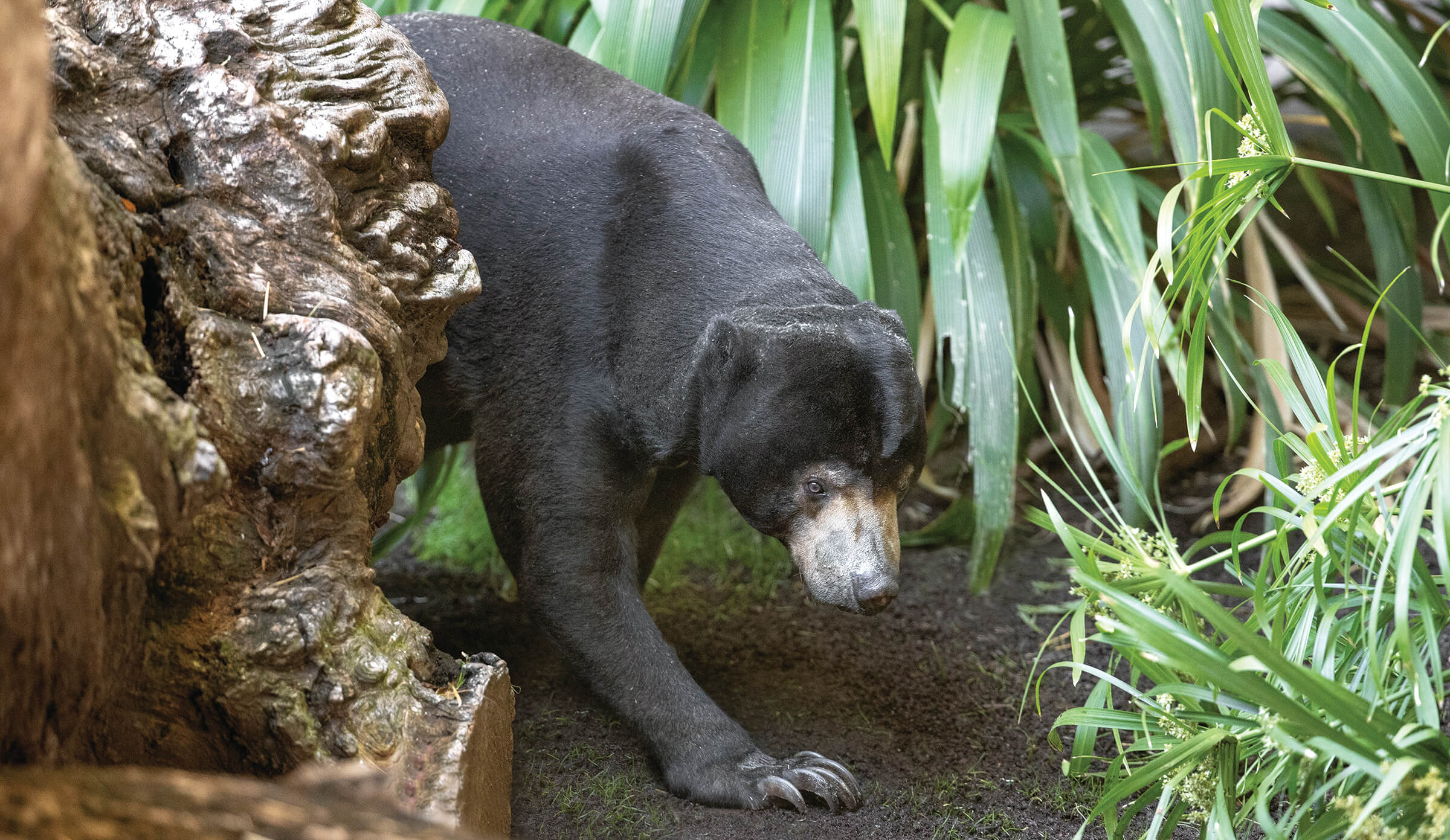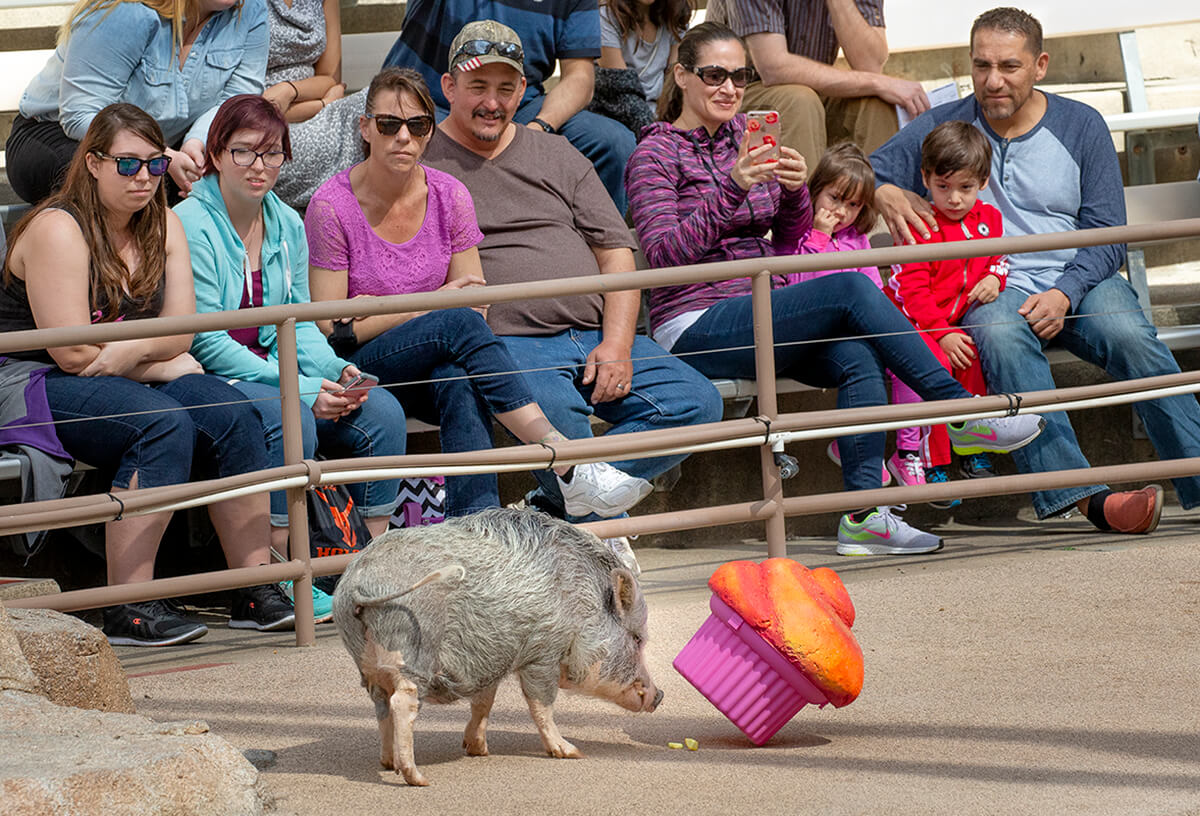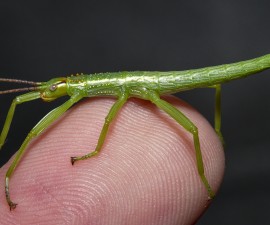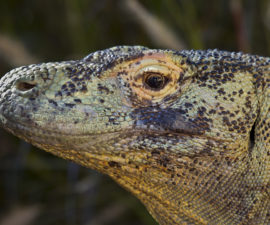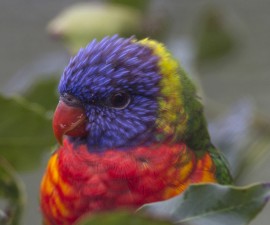BY Karyl Carmignani
Photography by Ken Bohn
In zoos, the health of the individual comes first.
In the wild, health of the population comes first.
-Don Janssen, DVM, retired corporate director of Animal Health, SDZG
Medicine provides science-based solutions to some of the most vexing health issues known. Animals can have some of the same diseases and conditions as humans, and often the treatment is quite similar. But a zebra can’t tell you where it hurts, nor can a capuchin share when she has a throbbing headache. Animal care staff must be hyperaware of telltale signs. Veterinarians must carefully and effectively treat pain—often from age-related conditions like arthritis—as well as a plethora of other ailments in their patients.
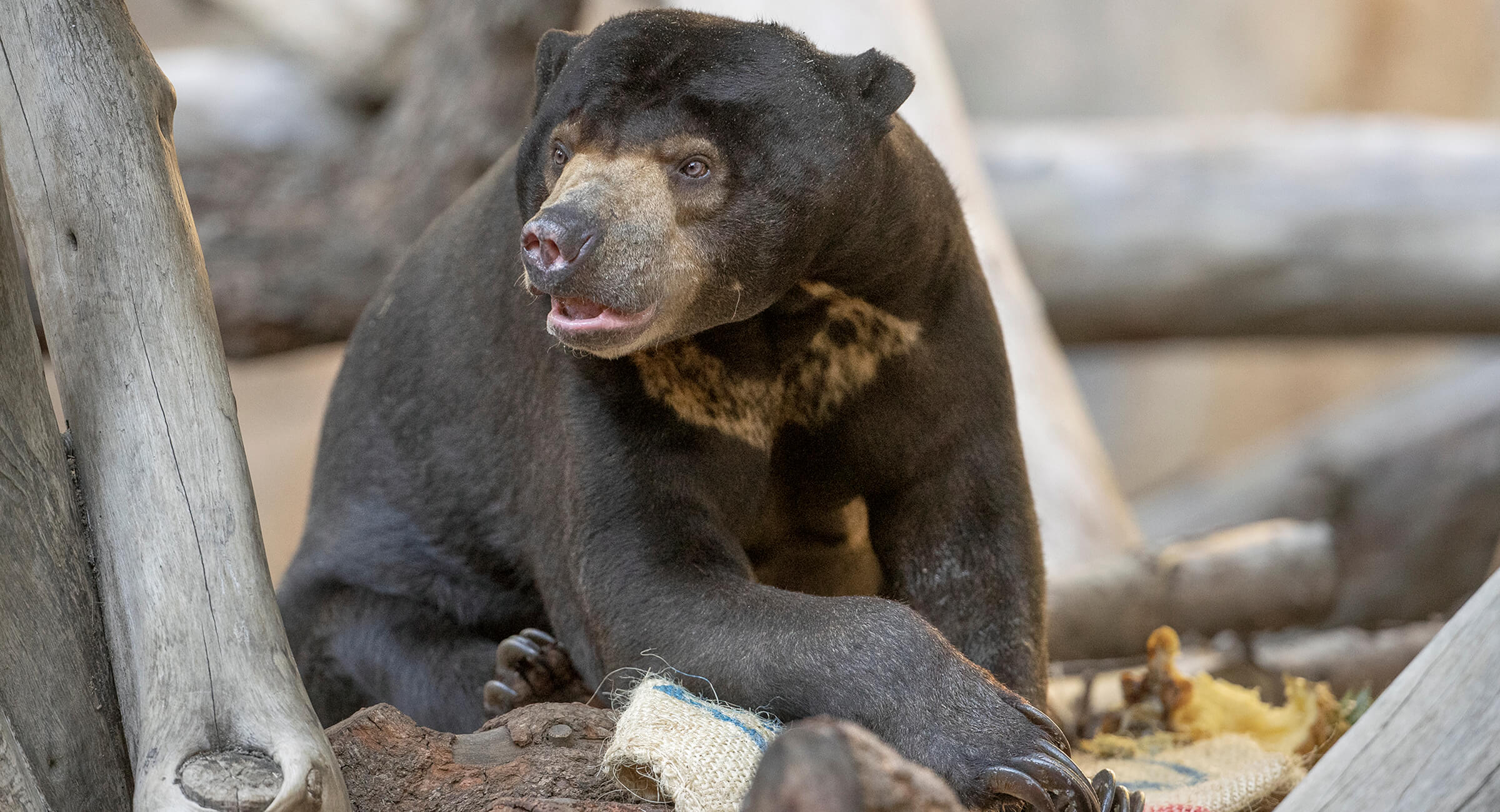
Sunny Outcome for Francis
In the late 1990s, Francis the Bornean sun bear was rescued from the illegal wildlife trade and eventually ended up at the San Diego Zoo. Now about 21 years old, he’s in the golden years for his species. Francis was diagnosed with arthritis in his left ankle several years ago and has been receiving treatment to improve his comfort.
Last spring, Francis started showing signs of stiffness after lying down, and was moving slower with a hunched posture. He was never big on climbing (though sun bears are arboreal), but his forelimbs appeared hard for him to use. A CT scan performed at the Zoo’s hospital showed arthritis in multiple joints, most severe in the hips and elbows. He was prescribed additional analgesic medications, but further treatment was needed.
Stem cell therapy has been used to treat several animals at the Safari Park, and staff veterinarian Dr. Matt Kinney co-authored a book chapter called “Stem Cell Therapy in Zoo Medicine” further elucidating the therapy. While the exact mechanism of this therapy is still being studied, it’s clear that stem cell therapy affects the microenvironment in joints and tissues, on a cellular and chemical level, to reduce inflammation and promote regeneration of healthy tissues. In human and veterinary medicine, bone marrow, adipose tissue (fat), and umbilical tissue are most commonly used for harvesting stem cells. Zoo veterinary staff collaborated with VetStem in Poway, California, to collect about 10 grams of fat from Francis’ shoulder, so his mesenchymal stem cells (MSC) could be grown at the VetStem lab.
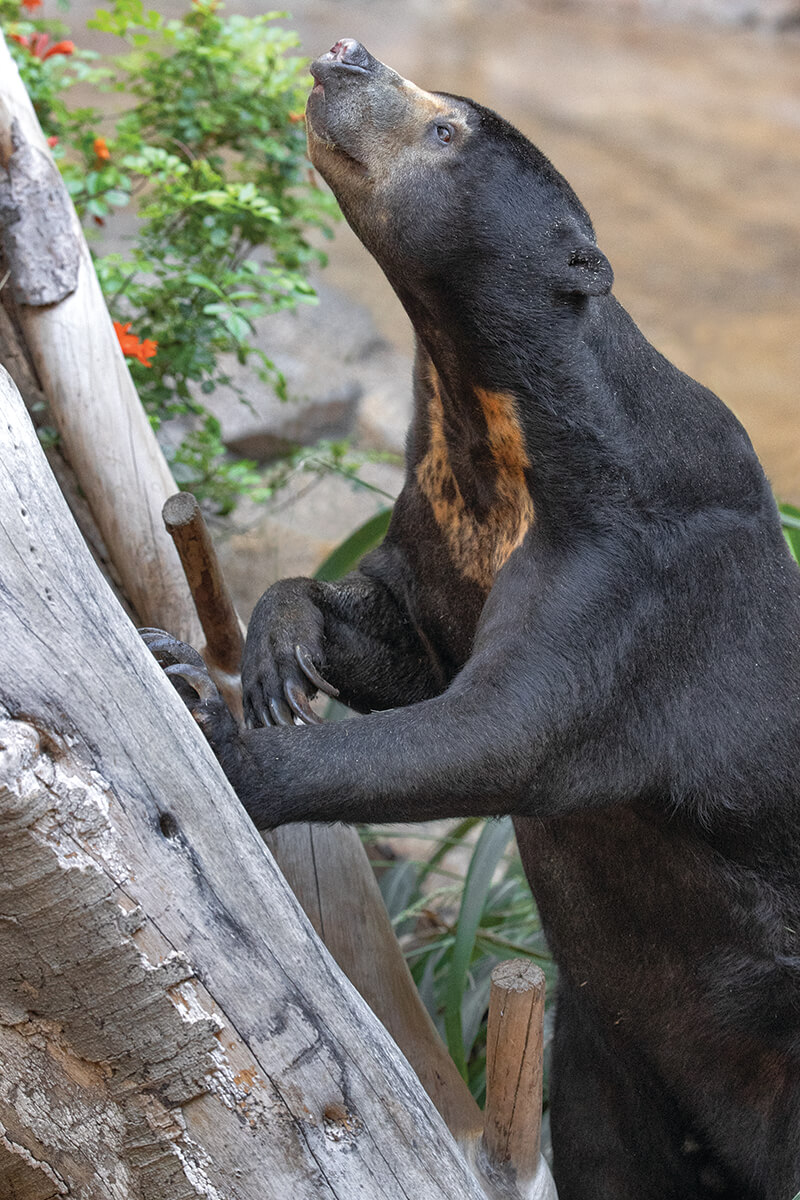
SOOTHING A SUN BEAR
Francis appears to be feeling and moving much better since he received stem cell therapy at the San Diego Zoo. He’s even climbing again!
Two months later, there was a large enough number of MSC for the procedure. Dr. Deena Brenner, senior veterinarian at the San Diego Zoo, explained that once the cells were thawed, they had to be used within 24 hours. “It was a high-pressure time frame to get everything in place,” she said. To ensure the best possible outcome, Dr. Holly Mullen, a veterinary surgeon certified in stem cell therapy, did the highly precise joint injections in the bear’s problem areas, and he received an additional dose of stem cells through an IV.
To document objective results from the therapy, three different keepers rated Francis independently using a Patient Specific Outcome Measurement form. The most improvement would likely occur in the first 30 days, and the data revealed the sun bear was indeed more upright, had a quicker gait, and had much less stiffness after lying down. He was even climbing more! After two months, he was moving at normal speed, and all his other symptoms were downlisted to “mildly problematic.”
Hali O’Connor, senior keeper at the Zoo, is excited that the treasured “Francy Pants” bear has resumed his favorite activities, like cracking open coconuts, exploring, and digging. “It feels good to get him into the best possible plane of health, especially in his advanced age,” said Dr. Brenner. While old may not be the new young, caring staff and innovative medicine are helping our elderly patients thrive.
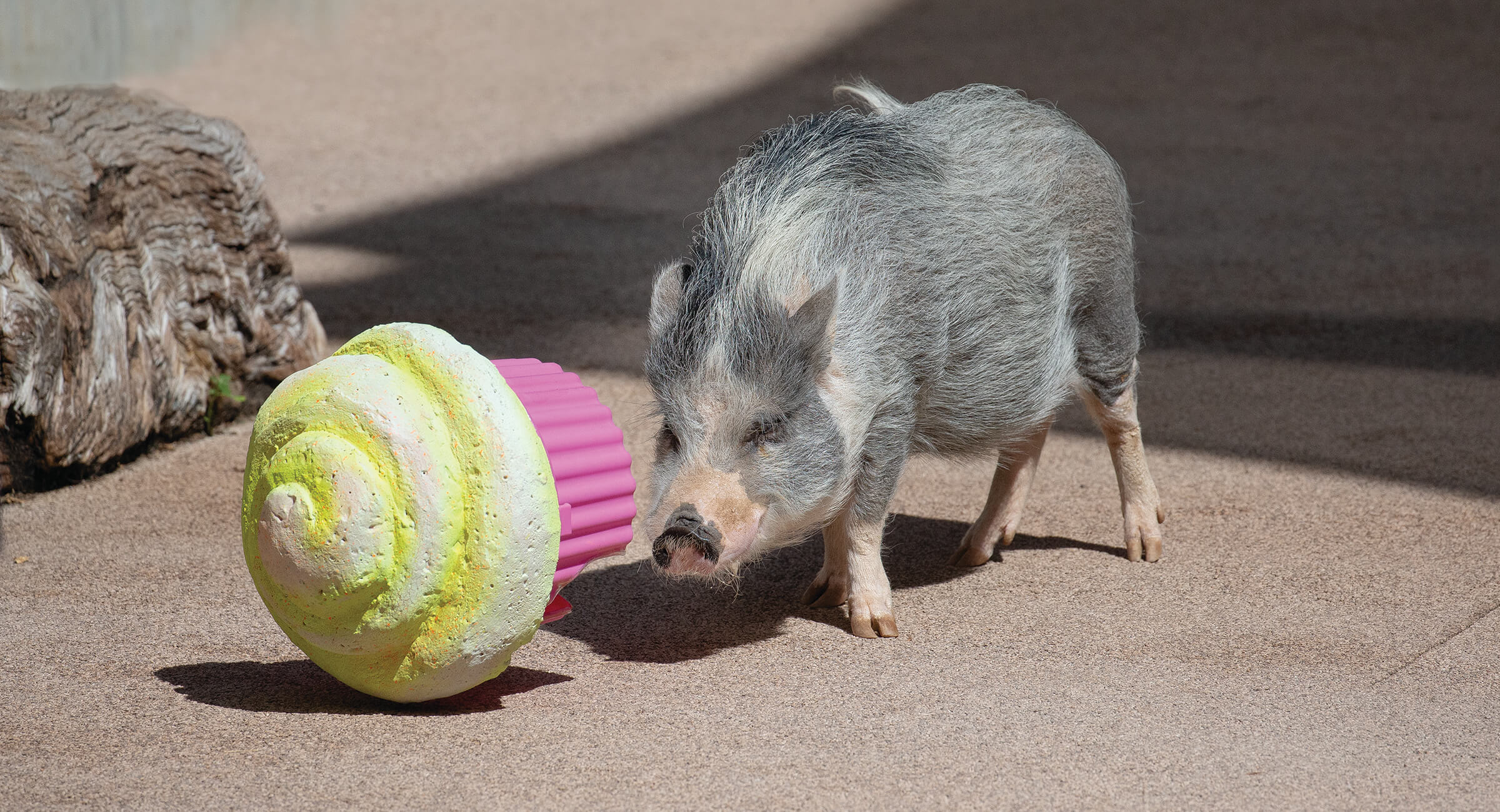
 Click here for more on animal care and how the Park’s Harter Veterinary Medical Center was constructed with its wild patients in mind, in “Built for Success.”
Click here for more on animal care and how the Park’s Harter Veterinary Medical Center was constructed with its wild patients in mind, in “Built for Success.”
Napoleon’s Complex Case
He’s an 86-pound show stopper, with a sassy stage presence and a voracious appetite for fallen figs. San Diego Zoo visitors may have seen him in action at Wegeforth Bowl: Napoleon the pot-bellied pig. Despite his joie de vivre, at 13 years old, this pig is geriatric by porcine standards. A couple of years ago he became lethargic, and creature comforts like a heat lamp and a fluffy dog bed were added to his digs to pamper the elderly pig. However, earlier this year Napoleon started developing a limp, which initially responded to meloxicam (like Advil for people) and he took time off from doing the shows he so enjoyed performing in, and trotting up the hill for figs. Over time, the limping worsened, and elbow radiographs (x-rays) revealed a large “joint mouse:” a concretion or stone that forms in the joint.
Dr. Beth Bicknese, senior veterinarian at the Zoo, needed to find a treatment that would help Napoleon return to normal activity and the show he loved. Some pain medications were ineffective and others made him “ataxic” or unsteady on his feet. He did respond to slow-release opioid injections, along with cosequin for joint health. This provided some relief, but he still had “lame days.”
After a consultation with Dr. Sean Aiken, a veterinary surgeon who specializes in orthopedic cases, a new technology was considered: platelet-rich plasma (PRP) therapy. PRP injections are made of the patient’s own concentrated platelets separated from whole blood, and used to promote natural tissue healing. Napoleon has a bit of trouble waking from anesthesia, so for Dr. Bicknese, it was nerve wracking to anesthetize him for the PRP procedure, but the risk was worth it to improve his quality of life.
Last April, vet staff gathered for Napoleon’s PRP procedure. Once he was anesthetized, a sample of his joint fluid was analyzed to rule out joint cancer or infection. His blood was spun in a vial to separate platelets, and then Dr. Aiken injected about a teaspoon of his platelets into the joint. Within three weeks, Napoleon was moving easier, and one month after that, Napoleon was approved to go back to “work”—and even trot up the hill for his beloved figs.
“This therapy totally exceeded my expectations,” said Dr. Bicknese. “With more geriatric animals at the Zoo, we are always trying to do better and use what’s new on the horizon, to keep them comfortable and thriving in their old age. We strive for both quantity and quality of life.” Napoleon would agree!

